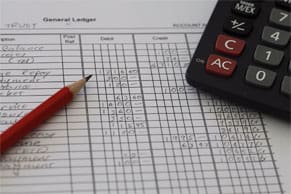Companies depend on a healthy cash position to operate well. This guide explores cash position formulas, calculations and examples. Learn how to use these tools and their output to improve decision-making, and get tips for cash management, reporting and forecasting.
Inside this article:
- The basics of good cash flow management
- How to determine your cash position
- Cash position formula
- Liquidity ratio formulas
What Is Cash Position?
Cash position, also known as cash on hand, describes the amount of money a company can access at a given time. Cash position also includes other liquid assets the company can quickly convert to cash, including stocks, bonds, and mutual funds.
Cash position is also a statement about whether a company can meet its expenses and liabilities. Companies must be able to meet their expenses to be stable. But having too much cash on hand – called “cash drag” – wastes opportunities for growth. That is, cash on hand is a drag on your investment returns, and it’s money that isn’t working for you.
The authors of a recent study emphasize this point. Their 2019 paper, titled “Management of Liquidity and Liquid Assets in Small and Medium-Sized Enterprises,” offers models to determine how much liquidity to keep. They write, “Our findings indicate that managers should aim to keep as close to the optimal liquidity level as possible and try to avoid any deviation in order to maximize the profitability of an SME.’’
Key Takeaways
- Good cash flow management starts with tracking all your receipts and transactions.
- Find the line between having enough cash on hand and cash drag by keeping a regular, detailed eye on your cash position.
- Decide which liquidity formula you need based on how quickly you react to market changes and business activities.
- Use technology to help you analyze and model forecasts of your cash position.
Cash Position Basics
The basics of cash position include good cash flow management. Companies need to plan, track and control their cash. This process seeks to keep the investment in cash low but still pay the bills.
The daily cash position is a part of good cash flow management. As a daily process and report, perform cash flow analysis to ensure your net cash position is favorable at the end of the day. This perspective is granular and useful when businesses operate on fine margins. Companies use their daily cash position to help make financial decisions for the day. They develop and track cash flow metrics and KPIs from their regular cash flow reviews. For example, companies could report their daily cash position at 11 am to make all daily financial decisions by noon. In this way, they can identify and address cash flow problems early.
Why Is a Strong Cash Position Important?
A strong cash position is essential because it signals the business is financially strong. It has enough assets to meet its future obligations and challenges. Moreover, it is flexible, especially in times of uncertainty.
With a strong cash position, a company can invest in other things. It can also secure financing with reduced interest rates. However, challenges in liquidity affect its cash flow, investing, solvency and liquidity ratio.
What Is Cash Positioning?
Cash positioning uses a planning tool to view, project and test your company’s cash needs. Cash positioning tools use cash flows and real-time data. You can look at several accounts at once or one at a time.
One of the primary purposes of cash positioning tools is to forecast. Cash forecasting is modeling that predicts your cash flow or cash position. Adjust variables such as the period and inputs in the forecast to determine their effect on your liquidity and cash needs. Then, make informed decisions based on your projections.
Cash Position Vs. Cash Flow
Cash flow is the net change of money coming in and out of your business, usually over a specific period such as a quarter. It is the difference between income and expenses. In contrast, a cash position is only for a moment in time.
Cash flows should show more money coming into the business than going out. However, there is no right or wrong cash position for a business since many factors influence it. For example, your company may have made higher payments to suppliers for the month or run over budget. Alternatively, you may choose to keep extra cash on hand, knowing that certain expenses are coming due. These examples do not affect your cash flow directly but temporarily affect your cash position. flow is the net change of money coming in and out of your business, usually over a quarter. It is the difference between income and expenses. Alternately, a cash position is only for a moment in time.
How to Determine Your Cash Position
Calculate your organization's cash position by starting with a specific period. Next, define the cash on hand, cash inflows, and expenses owed for the period. Finally, use the cash position formula and prepare a cash position financial report.
For this exercise, when you tally the money in your accounts, do not include payments for the cost of goods. Also, ensure you do not use your income statements or balance sheets, but rather the available cash in your bank accounts, in any tills, and amounts expected from interest payments.
Cash Position Formula
The cash position formula compares your company's liquid financial assets and current liabilities. Express this comparison as a ratio. Use this cash position ratio (CPR) when you must measure your liquidity, focusing on cash and cash equivalents. It is important to include short-term liabilities.
Cash position ratio = (Cash and account balances + marketable securities) / Short-term liabilities
For example, a company has $200,000 cash on hand, $45,000 in marketable securities, and $135,000 in short-term liabilities. In this example, your cash position ratio =
($200,000 + $45,000) / $135,000 = 1.8/1 or 1.8:1.
Cash Position Ratio
| Assets | ||
| Current Assets | ||
| Cash | $200,000.00 | |
| Marketable Securities | $45,000.00 | |
| Total Assets | $245,000.00 | |
| Liabilities | ||
| Accounts Payable | $100,000.00 | |
| Accrued Expenses | $35,000.00 | |
| Total Current Liabilities | $135,000.00 | |
| Ratio Analysis | ||
| Cash Position Ratio | 1.8:1 | |
This ratio shows whether the company will have cash left over once it pays off its debts. An ideal cash position ratio is 2:1, according to a paper titled "Financial Analysis and Cash Management’’ in Business and Management Review. If your figure is less, the stability of the company's financial situation is unsure. If your ratio is higher, the company risks a cash drag. However, some companies successfully operate on a much thinner ratio. This ratio is the most conservative of the different ratio calculations because it accounts only for cash and liquid assets on hand.
How Do You Prepare Cash Position?
Prepare your company’s cash position by first determining the period. For daily cash positions, ensure that each transaction has an associated receipt. Next, add up all cash inflows for the period. Finally, subtract all customer refunds, payroll, and vendor bills paid.
If you are using software to track money inflows and outflows, start by transferring data from your bank accounts and filtering by the accounts of interest. Review the cash inflows and outflows for each account, including the opening balance, projected cash flow, variance, and target. When creating your report, each inflow and outflow should have a row for clarity. Ensure that the amount of cash on hand matches the expected amounts from your calculations.
Example of a Cash Position
It's not just loan officers who should look at the cash position of public businesses. People who want to invest should also look at a company's net cash position. For example, in Q1 2020, Alphabet's (Google) current ratio was 3.7:1.
This ratio means that Google could pay its debts off 3.7 times over and had a significant amount of liquid cash leftover. A high current ratio does not always signify a good investment; it is preferable to low liquidity, however. Low liquidity could signal a company in financial distress.
Cash Position Analysis
External stakeholders analyze a company’s cash position by reviewing their quarterly cash flow statement. Internal staff may analyze the cash position daily. Then, the team makes financial decisions. For example, they choose the most necessary payments for approval that day.
Cash Position and Liquidity Ratios
Show your current cash position using a liquidity ratio. The liquidity ratio measures how well a company can pay its debts and maintain its safety margin. Liquidity ratios include the current ratio, quick ratio, and cash ratio.
Higher ratios mean the business has a higher margin of safety in meeting its current financial obligations. All liquidity ratios compare liquid assets to liabilities. For example, the current ratio, also known as the working capital ratio, compares current assets with current liabilities. Current assets and liabilities refer to assets that the company can convert to cash within one year and liabilities that the company must pay within one year, respectively. The current ratio uses the same formula as the net cash position but expresses the answer as a ratio instead of a dollar figure. Pull the statistics from your balance sheet.
Current ratio = (Current Assets) / (Current Liabilities)
For example, a company has the following figures:
Current assets = $500,000
Current liabilities = $300,000
The company’s current ratio = ($500,000)/($300,000) = 1.7/1 = 1.7 : 1. This means the business has 1.7 times the liquid assets it needs to cover its debts.
The quick ratio, also called the acid test ratio, is used to measure its ability to pay its liabilities off with quick assets. Instead of one year, the window shrinks to 90 days. This formula includes only cash and cash equivalents and receivables expected within 90 days, excluding inventory and prepaid expenses.
Quick Ratio = (Total Current Assets - Inventory - Prepaid Expenses) / (Current Liabilities)
For example, a company has the following information:
Total Current Assets = $150,000
Inventory = $75,000
Prepaid Expenses = $15,000
Current Liabilities = $43,000
The company’s quick ratio = ($150,000 - $75,000 - $15,000) / $43,000 = 1.44/1 = 1.44:1. This quick ratio indicates they have enough liquidity to pay off their debts. If their quick ratio were markedly lower than their current ratio, it would mean they rely too heavily on inventory for their company’s worth.
The cash ratio is only the cash and cash equivalents compared to current liabilities. This figure indicates if a business can immediately pay off its debt.
Cash Ratio = (Cash + Cash Equivalents) / (Current Liabilities
For example, a company has the following information:
Cash: $10,000
Cash equivalents: $30,000
Current liabilities: $28,000
The company’s cash ratio = ($10,000 + $30,000)/$28,000 = 1.42/1 = 1.42 : 1. This business has enough cash and cash equivalents to pay off its current liabilities with money left over.
How Do You Find Cash Position on a Balance Sheet?
Cash position represents cash and cash equivalents, such as currency, inbound checks, and balances in bank accounts. On the balance sheet, free cash flow is calculated by subtracting capital expenditures from the operating cash flow.
What Is the Net Cash Position?
The net cash position is a measure of liquidity that reflects where the company's liquidity position stands and includes the short-term and long-term cash inflows and outflows. This net position is essential to understand in times of crisis.
Net cash position is different from net cash flow. Net cash flow is the cash earned by a company after paying all its bills, dividends, and capital dues. Calculate net cash position by subtracting the total current liabilities from the total cash balance listed on the company's balance sheet
The net cash position is a profitability metric. It is where the company's liquidity position stands. It includes the short-term and long-term cash inflows and outflows. This net position is essential to understand in times of crisis.
Net cash position is different from net cash flow. Net cash flow is the cash earned by a company after paying all its bills, dividends and capital dues. Calculate net cash position by deducting the total current liabilities by the total cash balance from the company's balance sheet.
Net Cash Position = Cash Balance - Current Liabilities
For example, in September 2021, Apple Inc. listed the following data on their condensed consolidated balance sheets ($ billion):
Cash and cash equivalents: 34.940
Marketable securities:27.699
Non-current marketable securities: 72.197
Current liabilities: 125.481
In September 2021, Apple Inc.’s net cash position = (cash and cash equivalents + marketable securities + non-current marketable securities) – (current liabilities) =
(34.940 + 27.699 + 72.197) – (125.481) = 9.355. Apple Inc.’s net cash from that quarter was over nine billion dollars.
What Does End Cash Position Mean?
The end cash position is the sum of cash and cash equivalents on the balance sheet. On the cash flow statement, the end cash position is the change in cash plus the beginning cash balance for the period.
Companies can manipulate their end cash position to impress loan officials and stakeholders. For example, if the company prioritizes collecting outstanding revenue and slows payments to its creditors, it could artificially inflate its end cash position. In this case, the company would not be as solvent as it demonstrates in its filings.
Tips for Cash Position Management
Tips for managing your cash flow position start with closely monitoring your cash inflows and outflows. To understand your cash position, you must understand your cash flow well. For example, some people confuse profit with cash flow.
Guide to Getting Control of Your Cash Flow

To understand your cash flow, use your cash flow statement and prepare cash flow forecasts frequently. A forecast predicts future cash inflows and outflows based on various known variables. In addition, keep in mind historical trends such as specific customer payment histories and industry norms.
Other tips for cash position management include:
-
Address issues early: The sooner you identify problems, the easier it is to fix them. For example, if you need to reach out to your bank for flexibility or lenience, you could get support by asking before you are past due.
-
Have a backup plan in case of emergencies: Try to maintain a financial cushion. Planners recommend three to six months of operating expenses for SME businesses, depending on the industry. Also, consider a business line of credit for short-term issues.
-
Increase revenue and operational efficiency: Take advantage of payment terms for equipment and inventory, and prioritize critical expenses such as rent, taxes, and payroll. Make acquiring new customers a priority, even in hard times. Take advantage of current marketing channels to develop new business at a lower cost.
-
Minimize or eliminate the use of credit: If you have ever had issues with accounts receivable in the past, you understand that extending credit is not suitable for every business. Ensure the customers you do give credit to are appropriately qualified.
-
Grow carefully: Investment in expansion too soon can strain your cash flow. Instead, ensure you have the financial cushion required to purchase new equipment or hire more staff.
-
Invoice promptly: Delays in invoicing extend the wait for payment. Invoice as soon as you deliver the product or service, communicate your due dates and ensure your customers know what channel to pay through.
-
Use technology: Invoicing tools can help you keep track of your invoices, set terms, minimize payment delays and let you know if payments are late or missing. Some accounting tools are cloud-based and can also communicate with your customers.
Cash Position Reporting and Forecasting
To put your business in an optimal cash position, you need to track, report, and forecast your cash. First, review the daily cash position to alert you to any unusual activity. Then, at least monthly, generate a cash forecast with new inputs.
Use tools that can help you report and project. Some technology uses predictive modeling for cash forecasting. Advanced forecasts use different methods to show similar outcomes. For example, you will want to have best-case predictions, in which customers pay all invoices on time. Additionally, include predictive payment forecasts to look at your customers' historical trends and predict a reasonable scenario. Software should also adjust variables for "what if" simulations such as economic downturns. Finally, ensure any technology you acquire lets you drill down on variances to understand why and where they originate. Useful cash position reports are accurate and allow you to factor in all the details.
NetSuite Cash Management Saves Time and Improves Accuracy
Companies need a way to track, analyze and report their financials. They need a platform that can drill down into their assets and liabilities. Stakeholders need an accurate, up-to-date assessment to make decisions and plan the future.
NetSuite’s cash management solution provides real-time access to bank and credit card data, accelerates the reconciliation process and boosts the accounting team's efficiency. In addition, automatic imports offer an accurate picture of your current cash position, so finance has the information and insights they need to optimize working capital, forecast cash requirements and deliver precise reporting.
Set your bank and credit card accounts to import into NetSuite and get real-time cash flow insights automatically in one place with NetSuite’s cloud accounting software. Automate bank account management and reconciliation. Create and post transactions automatically from imported bank data. Operate at the speed of the cloud with NetSuite.
#1 Cloud
Accounting Software
Cash Position FAQs
How is cash position different from cash flow?
Cash position refers to the total cash a company has at a given moment, while cash flow measures the inflows and outflows of cash over a certain period, such as a fiscal quarter or month. Cash flow tells you how effectively a company manages its cash, while cash position is a snapshot of liquidity at a specific time.
What is included in a cash position calculation?
The cash position includes cash on hand, liquid cash balances (like checking and savings accounts), and cash equivalents like money market funds and short-term marketable securities — it doesn’t include long-term assets like property or inventory.
How often should a company review its cash position?
It depends upon a company’s size and complexity, but businesses should review cash positions on a regular schedule. For many businesses, a daily review is ideal, especially if they operate with thin margins or in industries where cash flow is critical. Monthly reviews may be enough for more stable cash flows.









